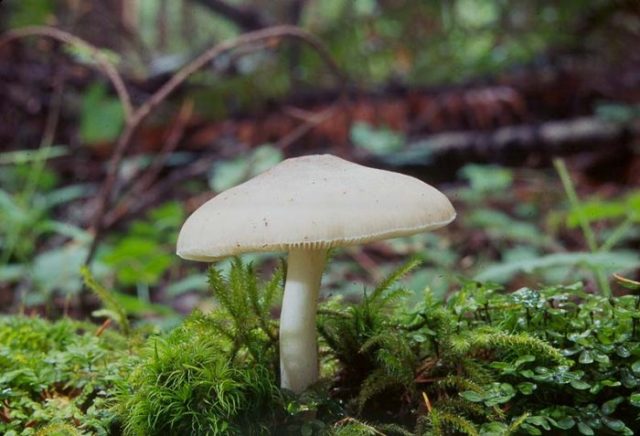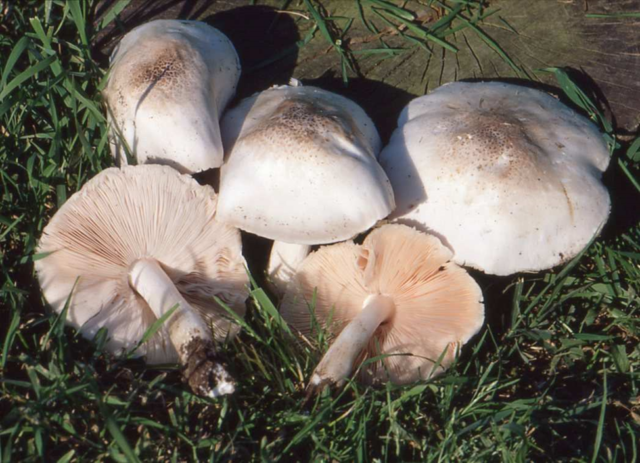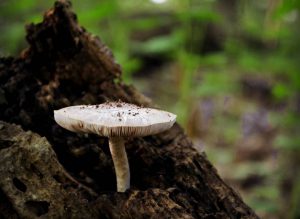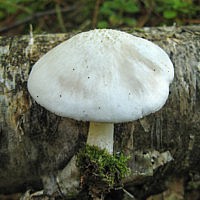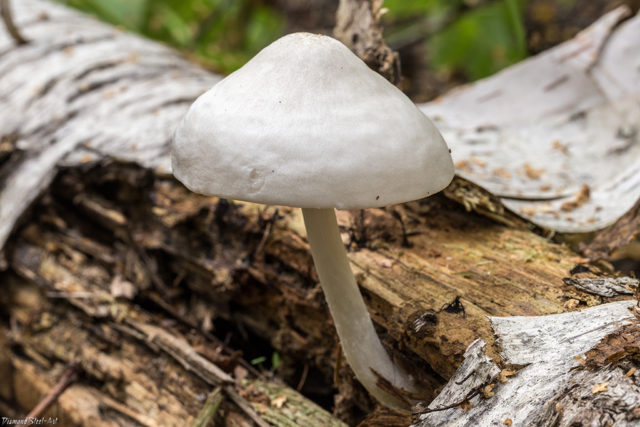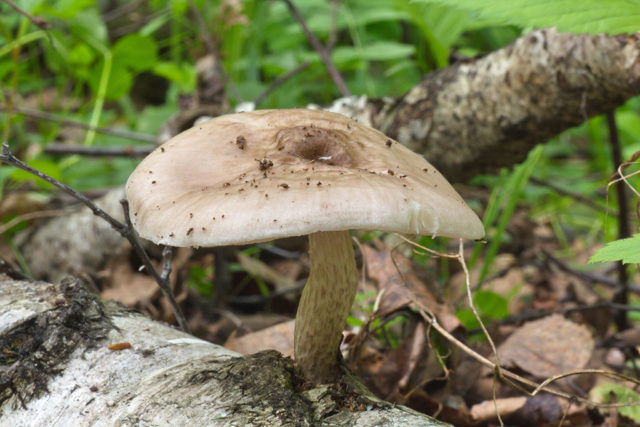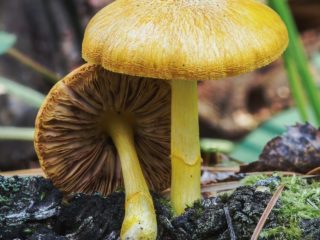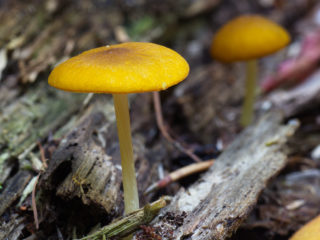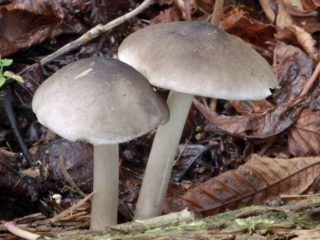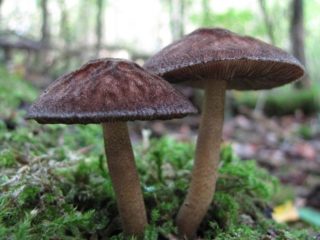Content
In the forest belt you can often come across small fruiting bodies without a pronounced odor and avoid them. Pluteaceae, an edible mushroom of the Pluteaceae family, is also found among them.
What does a white plume look like?
Pluteus is a small mushroom that is noticeable from afar due to its off-white color.
Description of the cap
At the beginning of ripening, the cap of the white plutea has a bell-shaped shape, then it gradually straightens. The color also changes: from off-white to yellow-gray. In the center there is a characteristic brownish tubercle covered with small dry scales. The surface of the cap is smooth and fibrous. The inner part is covered with radial, slightly pinkish plates. A thin layer of pulp has a faint rare smell. Cap sizes – 4-8 cm.
Description of the leg
Dense legs reach a height of 9 cm.It has the shape of a cylinder, expanding at the base due to a tuberous thickening. There are grayish scales on the surface of the legs. Mushrooms do not always grow straight, sometimes they become curved. The pulp is white, without much odor.
Where and how does it grow
The mushroom is quite rare. It is found from June to September in beech forests of Western Europe, deciduous plantations of the East European and West Siberian Plains, and the Ural Mountains. It was spotted in northern Africa. It grows on half-rotten wood of beeches, oaks and poplars, and on the decaying foliage of these trees. It can be seen even in dry years. The white plume is popularly called “clumpy”, since it does not appear alone, but in small groups.
Is the mushroom edible or not?
The white sparrow is considered edible. It retains its properties well when boiled and dried. Can be fried separately or together with other mushrooms.
Doubles and their differences
Due to its white color, this species has practically no counterparts. But there are similar fruiting bodies:
- The light variety (albino) of the edible deer plume (Pluteus cervinus) has a larger size and a shiny cap surface. It grows on both continents of America, Europe, and Africa. Loves the deciduous forests of Russia, appearing on decaying wood and rotten leaves.
- The edible northern white plume (Pluteus leucoborealis) differs from the white one only microscopically: it has larger spores. Its distribution areas are the northern latitudes of our country from St. Petersburg to the Atlantic coast.It is found in North America, in Alaska, taking a liking to decaying deciduous wood.
- The deciduous forests of the Northern Hemisphere are the favorite habitats of Pluteus petasatus, where it grows in small groups. It can reach up to 20 cm. The cap is smooth, even sticky in wet weather. Grayish, brown longitudinal veins stand out on the stem. The fruit body is edible.
- Pluteus hongoi is another edible twin. Although it is darker in color, there are also light varieties of Hongo. Rarely found in Russia.
Conclusion
White pluteus and all of the listed look-alikes are edible species. Of the similar poisonous fruiting bodies, the white fly agaric is called, but it has distinctive features - a ring on the stem, large dark plates on the cap, and the smell of bleach. An experienced mushroom picker can quite easily distinguish them and take only those that are edible and do not pose a danger to humans.
